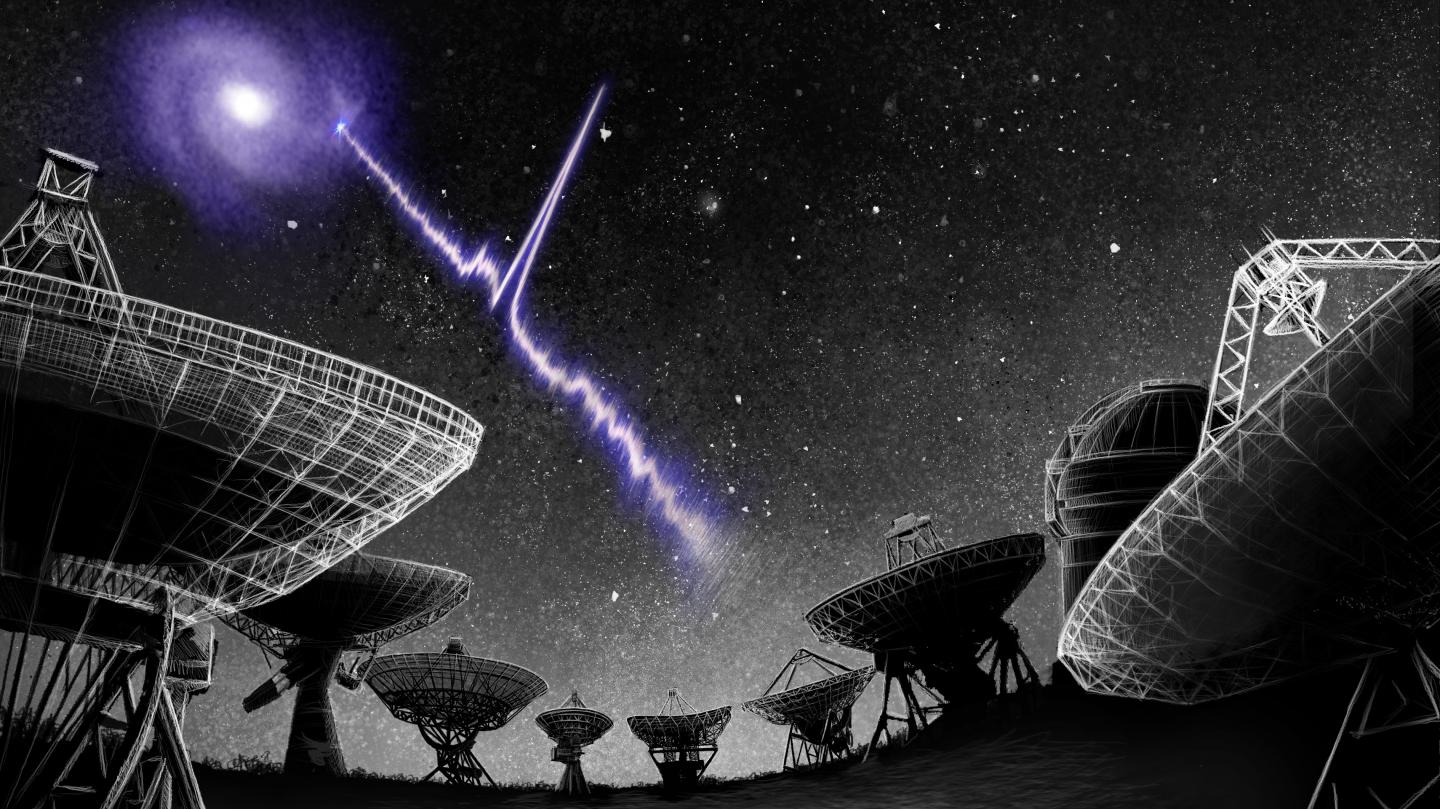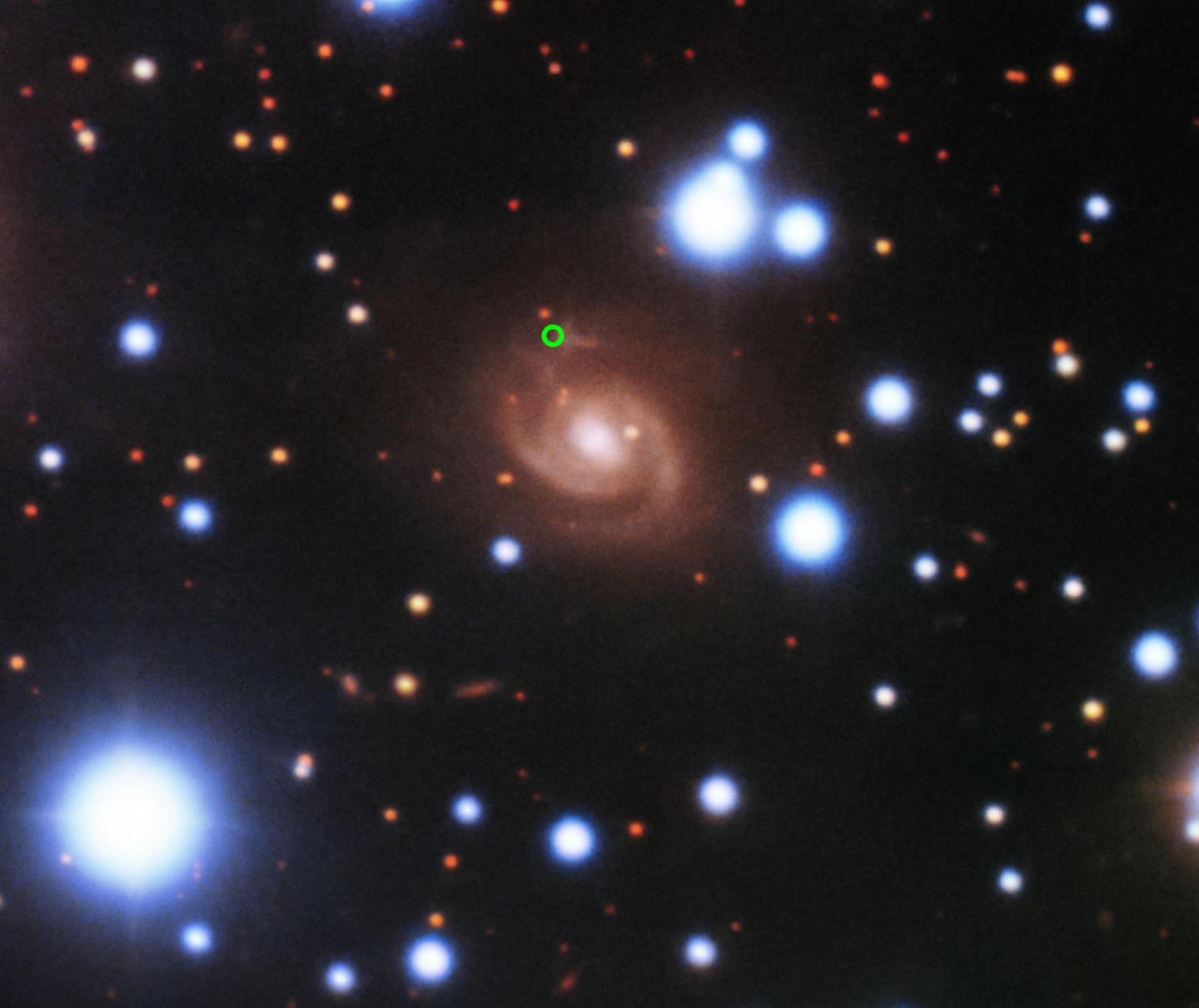Mysterious 'fast radio bursts' fire rhythmically through the cosmos, study finds
The origin of the signals remains unknown.

Mysterious pulses of radio waves from deep space can fire in regular patterns, a discovery that might help shed light on the cause of these puzzling outbursts, a new study finds.
Fast radio bursts, or FRBs, are intense pulses of radio waves that can emit more energy in a few thousandths of a second than the sun does in nearly a century. Scientists only discovered FRBs in 2007, and much remains unknown about them because of their brief nature.
Since fast radio bursts are rare and bright — they are visible from millions or even billions of light-years across space — researchers had often assumed they come from cataclysmic events, such as stellar flares or colliding neutron stars. (Neutron stars are corpses of stars that died in catastrophic explosions known as supernovas; their name comes from how the gravity of these stellar remnants is powerful enough to crush protons together with electrons to form neutrons.)
Related: Powerful radio bursts in space can explode over and over

The mystery of fast radio bursts increased when scientists discovered the first repeating fast radio burst in 2016. When astronomers see repeating patterns in celestial events, they often think rotation might play a role — for instance, a fast-spinning neutron star known as a pulsar, which blasts radio waves from its magnetic poles, flashing like a lighthouse from the perspective of Earth. However, the radio bursts in the 2016 event appeared sporadically, with random timing.
Now researchers have for the first time discovered a fast radio burst that generates a regular pattern of bursts. They detailed their findings in the June 18 issue of the journal Nature.
Scientists analyzed the repeating FRB 180916.J0158+65 using the Canadian Hydrogen Intensity Mapping Experiment (CHIME) radio telescope in Okanagan Falls, Canada. They had previously found that radio pulses from this source came from a Milky Way-like galaxy named SDSS J015800.28+654253.0, which is located about 500 million light-years from Earth.
Get the Space.com Newsletter
Breaking space news, the latest updates on rocket launches, skywatching events and more!

The researchers examined 38 bursts detected from September 2018 to February 2020. They detected a cycle that appeared to repeat about every 16 days. FRB 180916.J0158+65 would fire off bursts for about five days, with most bursts concentrated in a stretch about 14 hours long, then go dormant for about 11 days before starting the cycle all over again.
"The time scale of these bursts is very surprising," study co-author Dongzi Li, an astrophysicist at the University of Toronto, told Space.com. Scientists have often suggested fast radio bursts come from neutron stars, which often spin very quickly, and so they expected any patterns seen in these bursts would involve pulses separated by seconds or less. "A periodicity on the time scale of weeks was only rarely predicted in previously proposed theories," she said.
Although scientists currently have more than 50 potential models for the origins of FRBs, so far they have not detected any "smoking gun" clues that narrow down the options. Discovering this FRB can fire pulses in a 16-day pattern might potentially help limit the choices.
One possible explanation for FRB 180916.J0158+65 is that such pulses come from a neutron star orbiting a massive star. The stars in this binary system would complete an orbit around each other every 16 days, and Earth could see pulses from the neutron star during times when the neutron star's stellar companion is not obscuring it, the researchers said.
Another possibility is the axis of rotation of FRB 180916.J0158+65 is wobbly, so the directions its poles face wanders across the sky. As such, radio waves blasted from its poles might only get detected from Earth in this 16-day cycle, the scientists noted.
Now that researchers know when FRB 180916.J0158+65 is active, "hopefully there will be lots of followup observations that can point to a particular scenario explaining its activity," Li said.
- Mysterious deep-space flashes repeat every 157 days
- Mysterious light flashes are coming from deep space, and AI just found more
- Where do baby magnetars come from? Mysterious 'fast radio bursts' may provide clues.
Follow Charles Q. Choi on Twitter @cqchoi. Follow us on Twitter @Spacedotcom and on Facebook.
OFFER: Save 45% on 'All About Space' 'How it Works' and 'All About History'!
For a limited time, you can take out a digital subscription to any of our best-selling science magazines for just $2.38 per month, or 45% off the standard price for the first three months.
Join our Space Forums to keep talking space on the latest missions, night sky and more! And if you have a news tip, correction or comment, let us know at: community@space.com.

Charles Q. Choi is a contributing writer for Space.com and Live Science. He covers all things human origins and astronomy as well as physics, animals and general science topics. Charles has a Master of Arts degree from the University of Missouri-Columbia, School of Journalism and a Bachelor of Arts degree from the University of South Florida. Charles has visited every continent on Earth, drinking rancid yak butter tea in Lhasa, snorkeling with sea lions in the Galapagos and even climbing an iceberg in Antarctica. Visit him at http://www.sciwriter.us










